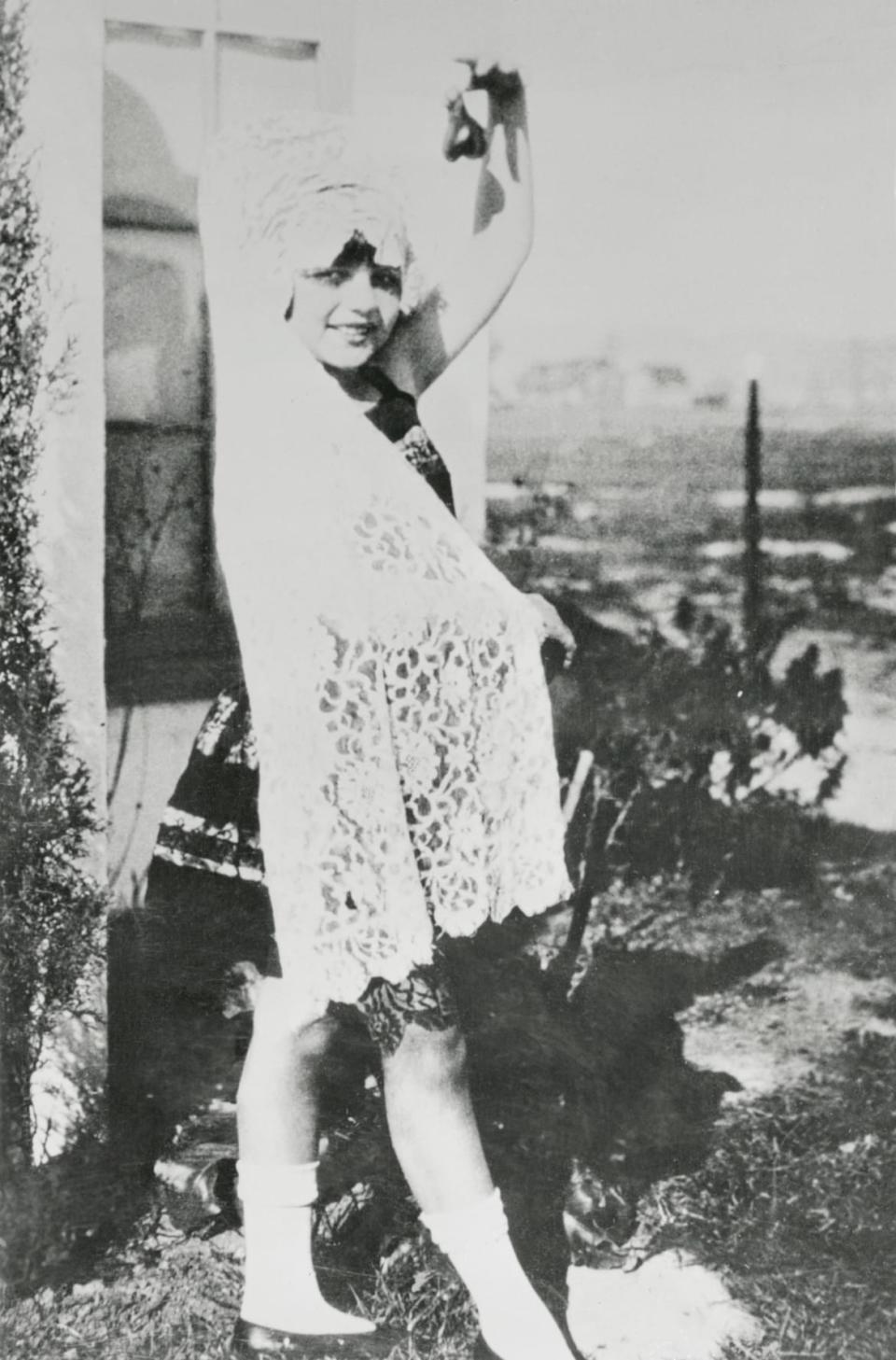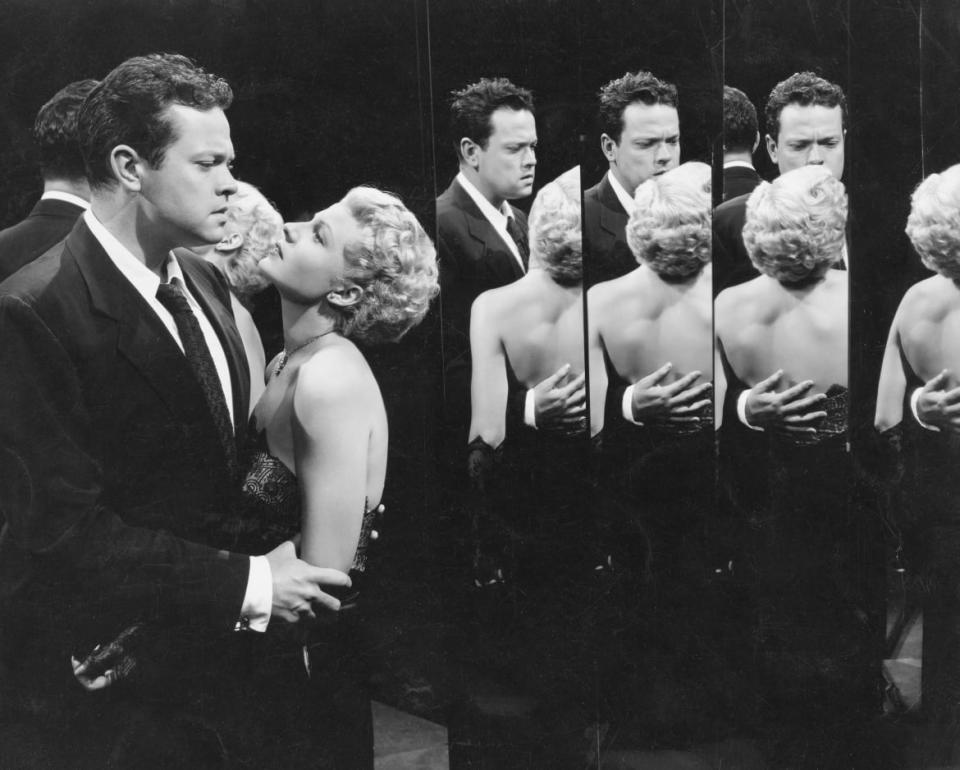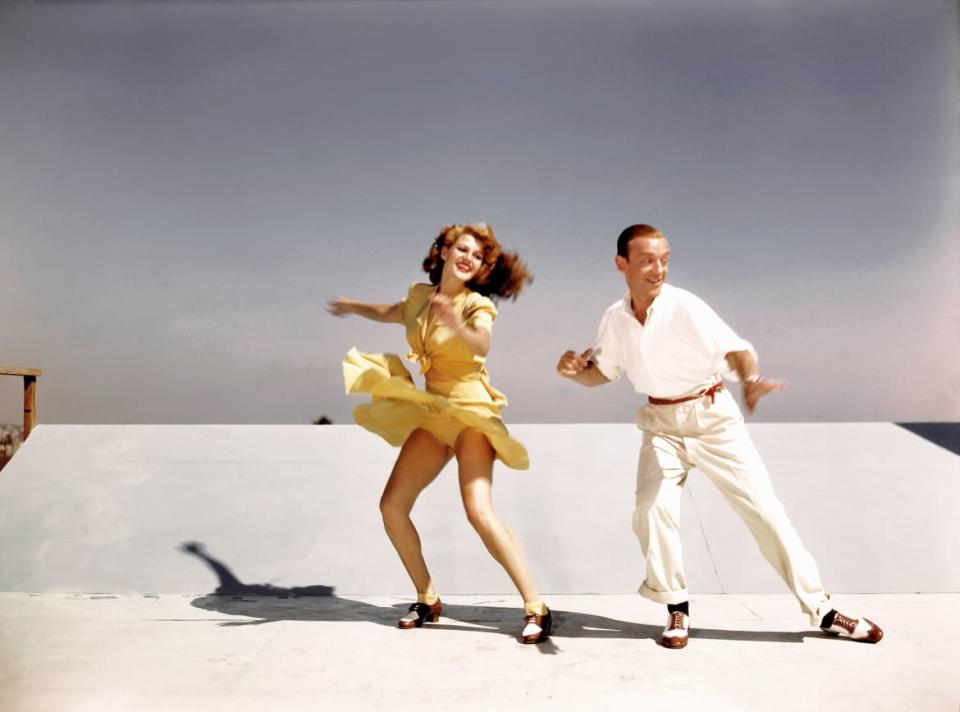The Immortal Rita Hayworth Walked in Beauty Shadowed by Tragedy

- Oops!Something went wrong.Please try again later.
- Oops!Something went wrong.Please try again later.
I never quite recovered from Citizen Kane. Its lyrical nightmare has haunted half my life. It’s no accident. Kane begins with a warning on a wire: no trespassing. Yet we’re trespassers, all. At least those of us who are willing to move beyond the wire into a film that never ceases to seduce, that is as modern now as when it was made. Small wonder, then, that I wished to tackle a novel about Orson Welles, whom I revered despite his gargantuan faults, as if he were devoured by his own largeness.
There was so much mythology surrounding him, most of it supplied by Welles himself, that I just couldn’t write a novel in his voice without surrendering to Welles’ own bravura.
Like many geniuses, he never solved the enigma of his own genius. He saw himself as a circus master, who could hold the entire “circus” of a film together. He couldn’t. He didn’t know the first thing about screenwriting when he arrived in Hollywood. Yet he had a gift that went beyond all the technical wizards at RKO. Welles had the eye of a camera. There isn’t a moment in Citizen Kane that doesn’t explode with energy and hold us captive to whatever image is onscreen. And no one but Welles could have dreamed up the magic mirror maze in The Lady From Shanghai, where he weaponizes the cinematic machine, and leaves us all helpless victims in its wake, trapped forever in that maze as moviegoers. Like other directors, he had his failures and misfires. But he remains the most audacious director in the history of film. Hollywood moguls, led by Louis B. Mayer, tried to destroy every print of Kane, to render it invisible, as Welles had dared parody their Willie, William Randolph Hearst. It’s Kane that has survived, not Louis B. Mayer, not the other moguls.
Yet the more I read about Rita Hayworth, Orson’s second wife, the more I realized that she would become central to my novel. Still, I couldn’t write in her voice—she had none. Her real voice was the glide of her body, her panther-like moves. And when I discovered that she had been violated by her own father, had become his sexual pawn as well as his dancing partner before she was thirteen, I sensed that Rita’s voiceless voice would remain crucial to whatever I wrote.

Rita Hayworth, aged 10, with Spanish shawl and castanets in yard of her family home.
And so I invented a narrator, Rusty Redburn, whose own sexual fluidity sets her apart from the other characters in the novel. She’s an outlaw who can see beyond the provincialism and prejudices behind the male-dominated hierarchy of Hollywood’s so-called “Golden Age.” She’s the perfect foil to Harry Cohn and his fellow moguls, since she possesses none of their structural power and they hardly care that she exists. But Rusty understands their “product”—their films—better than they do. She’s a kind of Cassandra who realizes which films will last and which won’t, and why the walled-in Hollywood citadel of Harry Cohn was destined to fail. She has her own movie house, the Regina, and becomes Hollywood’s chronicler, Regina X. She’s among the first to recognize Welles.
Hired by Harry to spy on Rita and Orson, she subverts his wishes, becomes Rita’s protector and Orson’s chief ally and part-time collaborator. But she cannot save Orson from his own extravagances and wanderlust. Decreed the most beautiful woman in the world, Rita was also one of the shyest. And that shyness would have crippling consequences; it kept her from traveling to the White House with Orson to meet FDR and Eleanor; she preferred the company of hairstylists and makeup girls at Columbia who tattled to her about Orson’s peccadillos and helped ruin their marriage. She would claim to love Orson all her life, after four other failed marriages and years of drinking that would hasten her dementia.

Rita Hayworth starring in The Lady from Shanghai with her then husband Orson Welles.
I did not want to document her decline in Big Red, though we do glimpse her in a bedraggled state. Instead, I tried to reveal the music in her bones, as Rusty herself relates—Rita was always dancing, even when she stood still. Her shyness was fully shown in Jane Withers’ poignant eulogy of Rita at her memorial service in Beverly Hills on May 18, 1987. Jane, a child star of the 1930s, had to tutor Rita on the set of Paddy O’Day (1936), or Rita couldn’t have recited her lines.
Go F—k Yourself: The Real Orson Welles

Actors and dancers Rita Hayworth and Fred Astaire rehearse on a roof top at Columbia Pictures for a scene from You Were Never Lovelier in 1942 in Los Angeles, California.
A gentle girl, Rita was pulled out of school at an early age and felt inadequate for the rest of her life. Yet her language was in her limbs. Much of the world could feel it when she danced with such abandon in Gilda. But the aura around Gilda couldn’t last, and as Rita would lament: Her suitors went to bed with Gilda and all of Gilda’s glamour and woke up to a girl who walked around in blue jeans. Rita often confessed how happy she had once been with Orson, who, adoring her as he did, still cheated on her with a parade of other women, such as Judy Garland and Marilyn Monroe, to name a couple. Though he claimed he still loved her in his very last interview (the day before he died), he did mock Rita in a rather brutal manner. If being with him meant happiness, he boasted to one of his biographers, then what could the rest of her life have been like?
Perhaps that is the mystery of Big Red. She had a temper. She drank. She succumbed to Alzheimer’s. But there remained a grandeur to her beauty. She was, after all, Princess Rita, even if she preferred Margarita Carmen Cansino. And when she was dealing with Harry Cohn and other powerful, predator-like males, her silence was both her weapon and her song.
Pain is the word that defines her, perhaps sadness, too. It’s curious that Jane Withers, a child herself in the 1930s, recognized the child in Rita. That’s why they got along so well. Both of them had the stubbornness of children—Jane was most often a spoiled brat onscreen. And when Jane first noticed Rita dancing in a Charlie Chan movie, she might have been looking into a mirror of herself, though Rita’s movements were magical, and Jane’s were not.
Rita of the red hair was a star long before the release of Gilda in 1946, but the role of Gilda made her immortal to mid-20th-century America and any distant land that had a movie screen. Sexualized though she was, the child in her remained. She was always the little girl locked in some unfamiliar dressing room with a set of toy electric trains for company while her parents gambled away whatever she earned. She kept these Lionel trains in her own dressing room at Columbia, coveting them throughout her career. Perhaps that sound of the trains as a locked-in child was the after-echo of her entire life, and this was the music she heard, even while she danced.
Get the Daily Beast's biggest scoops and scandals delivered right to your inbox. Sign up now.
Stay informed and gain unlimited access to the Daily Beast's unmatched reporting. Subscribe now.

